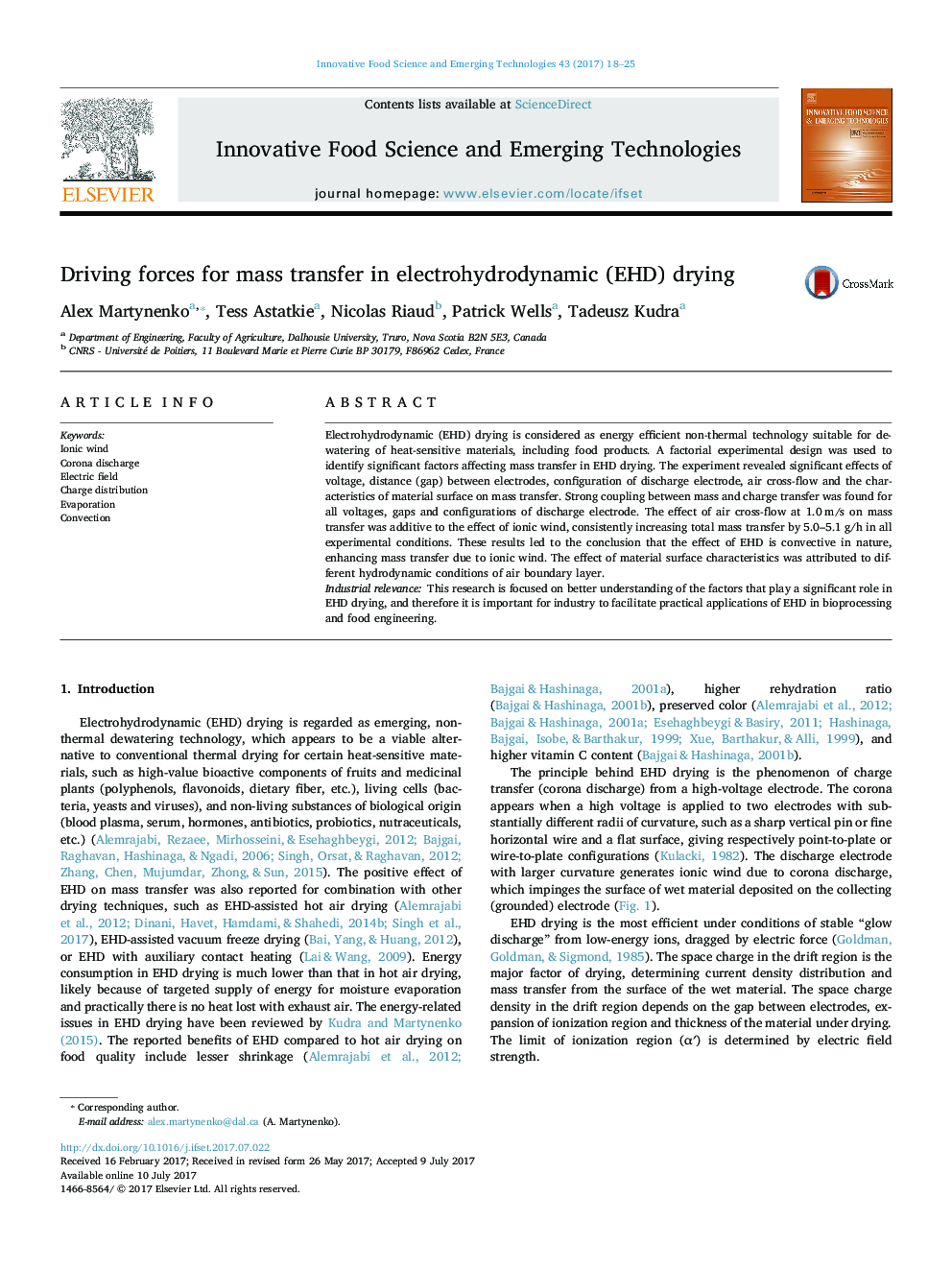| Article ID | Journal | Published Year | Pages | File Type |
|---|---|---|---|---|
| 5521683 | Innovative Food Science & Emerging Technologies | 2017 | 8 Pages |
â¢EHD-induced mass transfer is convective in nature.â¢Mass transfer from material is coupled with charge transfer to the material.â¢Drying rate depends on the voltage, gap, electrode geometry, air velocity and material surface.
Electrohydrodynamic (EHD) drying is considered as energy efficient non-thermal technology suitable for dewatering of heat-sensitive materials, including food products. A factorial experimental design was used to identify significant factors affecting mass transfer in EHD drying. The experiment revealed significant effects of voltage, distance (gap) between electrodes, configuration of discharge electrode, air cross-flow and the characteristics of material surface on mass transfer. Strong coupling between mass and charge transfer was found for all voltages, gaps and configurations of discharge electrode. The effect of air cross-flow at 1.0Â m/s on mass transfer was additive to the effect of ionic wind, consistently increasing total mass transfer by 5.0-5.1Â g/h in all experimental conditions. These results led to the conclusion that the effect of EHD is convective in nature, enhancing mass transfer due to ionic wind. The effect of material surface characteristics was attributed to different hydrodynamic conditions of air boundary layer.Industrial relevanceThis research is focused on better understanding of the factors that play a significant role in EHD drying, and therefore it is important for industry to facilitate practical applications of EHD in bioprocessing and food engineering.
